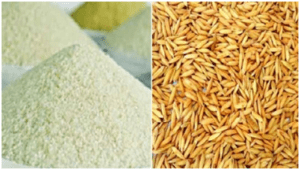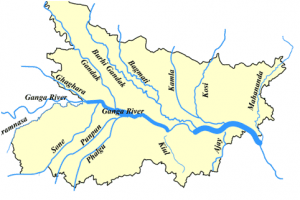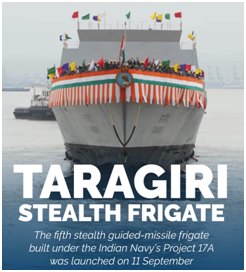Table of Contents
THE SOCIAL ISSUES
1. MADHYA PRADESH FIRST TO DRAFT SUICIDE PREVENTION STRATEGY
THE CONTEXT: Madhya Pradesh will be the first State in the country to prepare a draft suicide prevention strategy.
THE EXPLANATION:
• Centre for Social Sector development in Atal Bihari Vajpayee Institute of Good Governance and Policy Analysis has taken up a retrospective study of suicides in Bhopal in order to develop a suicide prevention framework for the state.
• As per the report, the study is classified into three parts.
• Part- A deals with the study of suicides in Bhopal in the stipulated time frame to understand the major trends. The major trends were:
• 20-30 age groups are the most vulnerable category and males are more prone to suicides than females.
• Private job holders, housewives, labourers and students form the high risk category.
• Part- B deals with comparative study of suicide prevention strategies from across the world to understand best practices. Suitable practices have been incorporated in the suicide prevention framework.
• Part -C pertains to strategy framework proposed by the research team. At 17.4%, the suicide rate (instances per one lakh population) was above the national average of 11.3.
THE INTERNATIONAL RELATIONS
2. THE KUSHIYARA RIVER TREATY
THE CONTEXT: During Bangladesh Prime Minister Sheikh Hasina’s visit to India a memorandum of understanding (MoU) was signed on sharing of the waters of the Kushiyara river, a distributary of the Barak river which flows through Assam, and then on to Bangladesh.
THE EXPLANATION:
What is the Kushiyara agreement?
• Over the last century, the flow of the Barak river has changed in such a way that the bulk of the river’s water flows into Kushiyara while the rest goes into Surma.
• The agreement is aimed at addressing part of the problem that the changing nature of the river has posed before Bangladesh as it unleashes floods during the monsoon and goes dry during the winter when demand of water goes up because of a crop cycle in Sylhet.
• Under this MoU, Bangladesh will be able to withdraw 153 cusecs (cubic feet per second) of water from the Kushiyara out of the approximately 2,500 cusecs of water that is there in the river during the winter season.
• It will benefit the farmers involved in Boro rice, which is basically the rice cultivated during the dry season of December to February and harvested in early summer.
• Bangladesh has been complaining that the Boro rice cultivation in the region had been suffering as India did not allow it to withdraw the required water from the Kushiyara.
About Boro Rice
• The boro rice is commonly known as winter rice.
• The term boro is Bengali originated from the Sanskrit word “Boro” which refers to a cultivation from Nov.-May under irrigated condition.
• It is photo-insensitive, transplanted rice cultivated in waterlogged, low-lying or medium lands with supplemental irrigation during November to May.
• This type of rice has been cultivated traditionally in river basin deltas of Bangladesh and Eastern India including Eastern U.P., Odisha, Bihar, West Bengal and Assam.
• Areas adjoining canals and roads, Chaur-lands/Tal-lands, are low-lying ditches with high moisture retention capacity where water is accumulated during monsoon months and cannot be drained out in winter months.
• Boro rice system takes advantage of residual moisture after the harvest of kharif rice.
• With the increase in irrigation facilities, boro crop is now being taken in areas outside its traditional boundaries and a new cropping system is emerging.
How will Bangladesh use the water?
• The water of Kushiyara will be channelled through the Rahimpur Canal project in Sylhet.
• The eight km long canal is the only supplier of water from the Kushiyara to the region and Bangladesh has built a pump house and other facilities for withdrawal of water that can now be utilised.
• The water of the Kushiyara has been used for centuries in Sylhet.
• But Bangladesh has witnessed that the flow and volume of water in the canal has reduced during the lean season.
• The utility of the river and the canal during the lean/winter season had gone down, affecting cultivation of rice as well as a wide variety of vegetables for which Sylhet is famous.
• The additional water of Kushiyara through the Rahimpur Canal therefore is the only way to ensure steady supply of water for irrigation of agriculture fields and orchards of the subdivisions of Sylhet.
Link with climate change
• The Kushiyara agreement is relatively smaller in scale in comparison to Teesta that involves West Bengal, which has problems with the proposal.
• The Kushiyara agreement did not require a nod from any of the States like Assam from which the Barak emerges and branches into Kushiyara and Surma.
• The reduced water flow of the Kushiyara during winter and Teesta too, however, raise important questions about the impact of climate change on South Asian rivers that can affect communities and trigger migration.
• Bangladesh has cited low water flow in its rivers during the winter months as a matter of concern as it affects its agriculture sector.
• The coming decades will throw up similar challenging issues involving river water sharing as the impact of the climate crisis becomes more visible with water levels going down in several cross-border rivers.

THE HEALTH ISSUES
3. TB MUKT BHARAT ABHIYAN ‘NI-KSHAY 2.0’ PORTAL
THE CONTEXT: President of India recently launched the ‘Pradhan Mantri TB Mukt Bharat Abhiyan’ and the Nikshay 2.0 portal to eliminate TB by 2025 through a virtual event.
THE EXPLANATION:
• Under this campaign, any person, any representative or organization can adopt TB patients and the adopted patients will be taken care of.
• More than 66 percent TB patients currently undergoing treatment in the country have given their consent for adoption under this campaign.
• Under this scheme, more than 62 lakh TB patients have received financial assistance of Rs 1,651 crore since 2018. This involves a direct transfer of Rs 500 to the patient’s bank account.
Nikshay 2.0 Portal
• The NIKSHA 2.0 portal provides additional patient support to TB patients to take advantage of Corporate Social Responsibility (CSR) opportunities to improve treatment outcomes, enhance community participation and fulfill India’s commitment to TB eradication by 2025.
• The people and institutions who come forward to take care of the patients will be called “NikshayMitras”.
• The period of Nikshay Mitra support can be chosen from one year to three years. They can also choose the state, district, block, health facilities.
• Around 13.5 lakh TB patients are registered in the NIKSHA portal, out of which 8.9 lakh active TB patients have given their consent for adoption.
• The digital portal Nikshay will provide a platform for community support to TB patients.
• Under this initiative, individuals, organisations, corporates, cooperative organisations, elected leaders and NGOs can provide support to persons suffering from TB by adopting them. You can also login to Nikshay 2.0 Portal.
• According to official sources, out of the total 13,51,611 TB patients currently in the country, 8,95,119 had given their consent for adoption by September 7.
VALUE ADDITION:
About TB Free India Campaign
The TB Free India Campaign was started by Prime Minister to eliminate Tuberculosis in India. This campaign seeks to achieve the target of eliminating TB by 2025, as a part of sustainable development goals. However, goal of eliminating TB by 2025, is 5 years ahead of global target of eliminating TB by 2030.
THE GOVERNMENT INITIATIVES IN NEWS
4. GAYAJI DAM: INDIA’S LONGEST RUBBER DAM ON FALGU RIVER
THE CONTEXT: Recently, Bihar Chief Minister inaugurated the country’s largest rubber dam and a steel bridge over the Falgu river near Vishnupad temple in Bihar.
THE EXPLANATION:
• The Gayaji Dam has been constructed by Rubina Company of Austria in collaboration with Nagarjuna Construction Company of Hyderabad on the advice of experts from IIT Roorkee.
• Apart from the rubber dam, the banks along the Falgu River have also been developed and a steel bridge has been built for pilgrims to visit Sita Kund.
• The rubber dam is made of 17 mm thick rubber. This dam is 400 meters wide and 3 meters high. After the construction of the dam, its water will be stored for about two and a half kilometers.
• The height of Bar Dam has been kept at three meters. It will hold water up to three meters. If there is more water than this, the water from the top of the rubber dam will flow downwards i.e. in the north direction. In special circumstances, arrangements have been made to release water from the rubber dam.
• It is bulletproof and experts claim that it will not deteriorate for 100 years. This rubber dam, built at a cost of about 312 crores, will keep water throughout the year in the Falgu river.
• This will facilitate people to take bath, pinddaan and perform tarpan. Here people not only from the country but also from abroad come to offer sacrifices to the ancestors for salvation.
Falgu River
Falgu River originates in the Palamu district of Jharkhand. This river passes through the holy city of Gaya in Bihar and has significance in Hindu and Buddhist religions. The length of the Falgu river in Bihar is about 135 km. This river starts near Gaya at the confluence of Lilajan River and Mohana River and finally joins Punpun River.

THE SECURITY AFFAIRS
5. TARAGIRI: THIRD STEALTH FRIGATE UNDER PROJECT 17A
THE CONTEXT: Project 17A’s third stealth frigate ‘Taragiri’ was recently launched by Mazagon Dock Shipbuilders Limited (MDL) in Mumbai.
THE EXPLANATION:
Taragiri is the third stealth warship to be built under Project 17A.
• The 149 m long and 17.8 m wide ship is powered by a combination of two gas turbines and two main diesel engines. They are designed to achieve speeds in excess of 28 knots at a displacement of 6,670 tonnes.
They are designed to achieve speeds in excess of 28 knots at a displacement of 6,670 tonnes.
• The ship is expected to be delivered by August 2025.
• The ship is being launched with an estimated launch weight of 3,510 tonnes.
• The ship is designed by the Bureau of Naval Design, the in-house design organization of the Indian Navy.
• The ship was named by Charu Singh, President, Naval Wives Welfare Association (Western Zone) and Vice Admiral Ajendra Bahadur Singh, Flag Officer Commanding-in-Chief, Western Naval Command, wife of the Chief Guest.
• The steel used in the hull construction of the P17A frigate is indigenously developed DMR 249A, a low carbon micro-alloy grade steel manufactured by the Steel Authority of India Limited.
Project P17A
Under project P17A, first two ships were launched 2019 and 2020. First ship was launched at Mazagon Dock Shipbuilders Limited. On the other hand, second ship was launched at Garden Reach Shipbuilders and Engineers Limited. On May 2022, the third ship named Udaygiri was launched at MDL and is expected to start sea trials during the second half of 2024. All the ships under project P17A have been designed in-house by Directorate of Naval Design (DND) of Indian Navy.
THE PRELIMS PERSPECTIVE
6. OPERATION LONDON BRIDGE
THE CONTEXT: With the death of Queen Elizabeth II, Operation London Bridge became active in Britain. This is a protocol that has been in place since the announcement of the Queen’s death by Buckingham Palace on 8 September.
THE EXPLANATION:
What is Operation London Bridge?
• Operation London Bridge is the planning of events in the UK following the death of the head of state. Under this operation, the Prime Minister in Britain will first issue a statement on the news of the death from the government. After that she will address the public.
• After this, King Charles of Britain will address the name of the country. The background of the Royal Family website will be darkened. This would in a way confirm the death of the Queen. At the same time, a black banner will appear on all UK government websites and social media pages.
• The plan describes the day after the Queen’s death as D+1 and the day of her funeral as D+10. During this period, the British Parliament adjourns business for these 10 days by sending condolence messages.
• The next day the Queen’s body is brought to Buckingham Palace. The Queen has died in Scotland, so Operation Unicorn will continue until her body is sent to London.
• Condolences will be brought to Westminster Hall between the third and fifth days. Charles would then begin his tour of Britain as the new king.
• After this, the body of Elizabeth II will be kept in Westminster Hall for three days. Here common people will be able to pay tribute to him. The tribute program will run for 23 hours a day.

